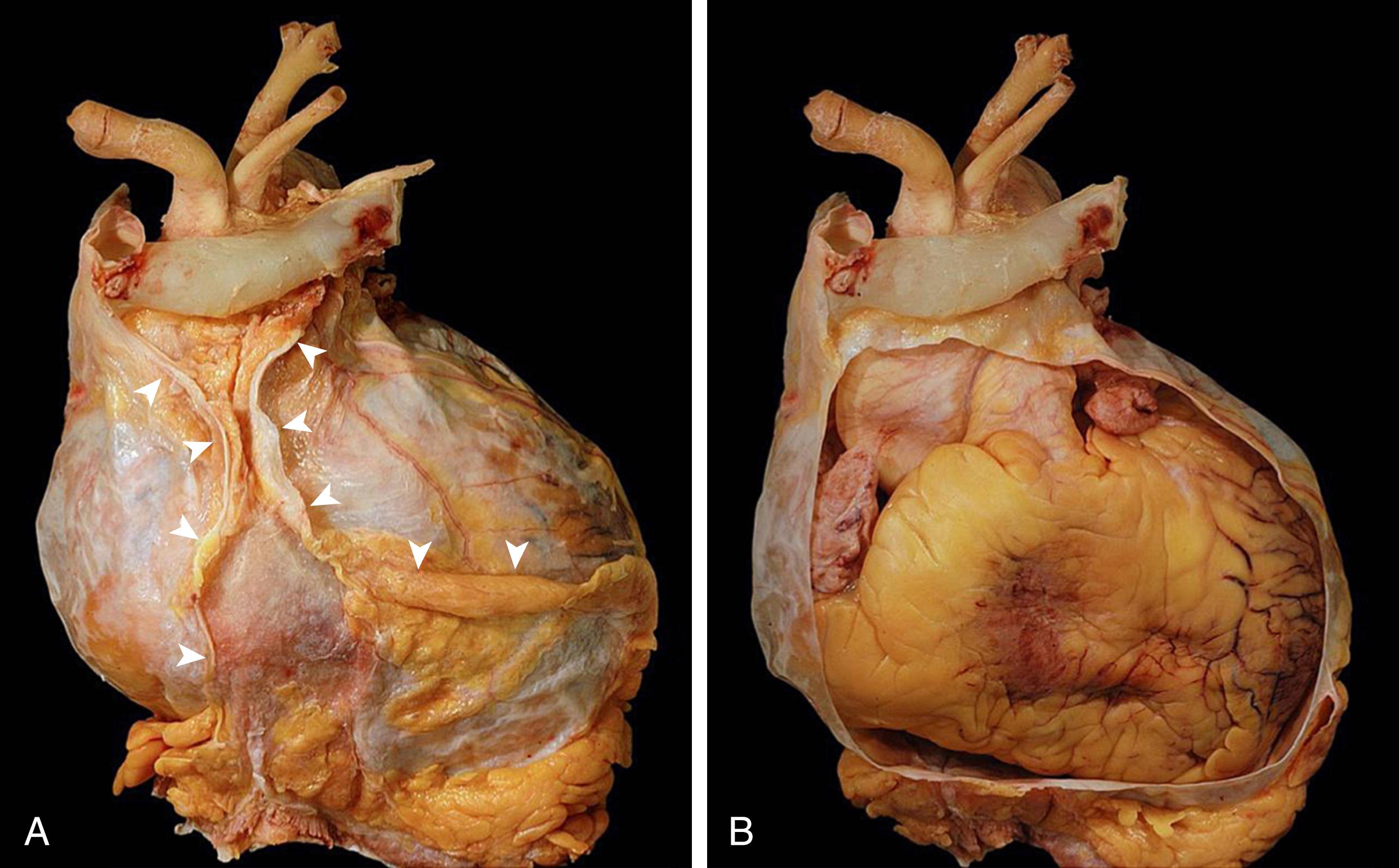Physical Address
304 North Cardinal St.
Dorchester Center, MA 02124
The pericardium is a membranous sac that envelops almost the entire heart (with the exception of the region of the left atrium around the pulmonary venous ostia) as well as the origins of the great cardiac vessels (the ascending aorta, the main pulmonary artery, and the venae cavae). The term “pericardium” is a Latinized version of the Greek word πɛρικάρδιον, which literally means “that which is around the heart.” As an anatomic term, the word has been used at least since the time of the Greco-Roman physician Galen around ad 160, when he used it to describe stab wounds of gladiators resulting in pericardial effusions. In English, the word “pericardium” first appears in print around 1425 in a Middle English translation of Chirurgia Magna , a surgical treatise written in Latin by the French physician Guy de Chauliac (c. 1300–1368).
The pericardium envelops the heart of all vertebrates, including fishes, amphibians, reptiles, birds, and mammals. As such a phylogenetically ancient structure, it forms very early during embryologic development in humans (starting at around 5 weeks’ gestation) by the division of the coelom—the original visceral cavity—into pericardial, pleural, and peritoneal spaces. Through incompletely understood mechanisms, embryologic mishaps may result in a congenitally absent pericardium or pericardial cysts.
The normal pericardium ( Fig. 119.1 ) consists of a double-layered sac: an outer fibrous envelope (fibrous pericardium) and an inner serous sac (serous pericardium). The serous pericardium can be divided into an outer (parietal) and an inner (visceral) layer. The parietal layer normally fuses with the fibrous pericardium to create an inseparable outer layer of the pericardium. The fibrous pericardium is contiguous with the adventitia of the great arteries. The visceral layer of the serious pericardium is synonymous with the epicardium. Between these two layers there is a virtual space that contains a very small amount of clear serous fluid, as discussed later.

The pericardium spans the space between the third and the seventh rib. Strong superior and inferior sternopericardial ligaments anchor the pericardial sac to the posterior aspect of the sternum. In addition, loose fibrous tissue binds the pericardium to the diaphragm and surrounding thoracic structures, including pleurae. The right and left phrenic nerves travel in this loose tissue between the fibrous pericardium and the pleurae. The arterial supply to the pericardium is provided by the branches of the internal mammary arteries (especially the pericardiophrenic artery) and the descending thoracic aorta. The pericardiophrenic vein, ultimately draining into the brachiocephalic vein, provides the principal venous drainage of the pericardium. The nerves of the pericardium are derived from the sympathetic trunks as well as the vagus and phrenic nerves.
Become a Clinical Tree membership for Full access and enjoy Unlimited articles
If you are a member. Log in here